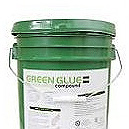Differences between Water and Solvent Based Adhesives
- 23 June 2016
- Posted by: Madhuraka
- Category: Article
 Chemical bonding technology is dominated by two adhesive families, two distinctly different surface-joining formulations. There’s the viscous and potentially toxic group, a series of compounds we call solvent based adhesives. In the other corner of the adhesion ring, water based adhesives provide an alternative bonding option. The two groups are undoubtedly both accomplished joining agents, but their contrasting base structures do set them apart. Let’s take a closer look at those differences.
Chemical bonding technology is dominated by two adhesive families, two distinctly different surface-joining formulations. There’s the viscous and potentially toxic group, a series of compounds we call solvent based adhesives. In the other corner of the adhesion ring, water based adhesives provide an alternative bonding option. The two groups are undoubtedly both accomplished joining agents, but their contrasting base structures do set them apart. Let’s take a closer look at those differences.
Solvent VS Water Curing Technology
There’s a chance we’d be accused of jumping the proverbial gun if we were to immediately launch into a comparative analysis. Instead, just to bring us all up to speed, let’s open with a concise description that covers both compounds. Well, the two labels really only serve to inform us of one thing. They tell us how the active fixing agents are carried. On closer inspection, water based adhesives are waterborne, in that the watery carrying base evaporates as the resinous fluid is applied. In essence, the adhesive cures as it dries. Similarly, solvent based adhesives rely on liquefied polymers as the active ingredient, one that cures as the solvent dissipates.
Base-Oriented Adhesive Differences
Solvent carriers are the ever-popular products that deliver industrial-strength bonds, but look out for noxious fumes when the substance is being applied. Meanwhile, paste-like watery adhesives have long since given impotent starches the push in favour of strong acetates and flexible synthetic elastomers. The substrate used with a water base is just as tacky as the alternative solvent based product, but it’s free of fumes and non-flammable, thus safe adhesion is underlined. Conversely, special precautions need to be followed when solvent based adhesives are used to bond surfaces. These include provisions for adequate ventilation so that respiratory ailments can be avoided. Of course, the water carrying solution isn’t perfect, either. It’s prone to weathering, which means the formula can deteriorate when temperature extremes and rain penetration get out of hand. But, on tackling a waterborne adhesive once more, the inherently safe fluid is easy to wipe away and clean, which is something that can’t always be said for the solvent carrier.
The differences go on like this, like a tug-o-war on a chemical scale. The solvent form is basically a threat to the environment, a hazard that can trouble breathing and introduce a fire risk to a bonding project. Therefore, although many of these material characteristics can be equalized by purchasing proprietary formulations, a solvent base will always carry a safety-related question mark above its package.

